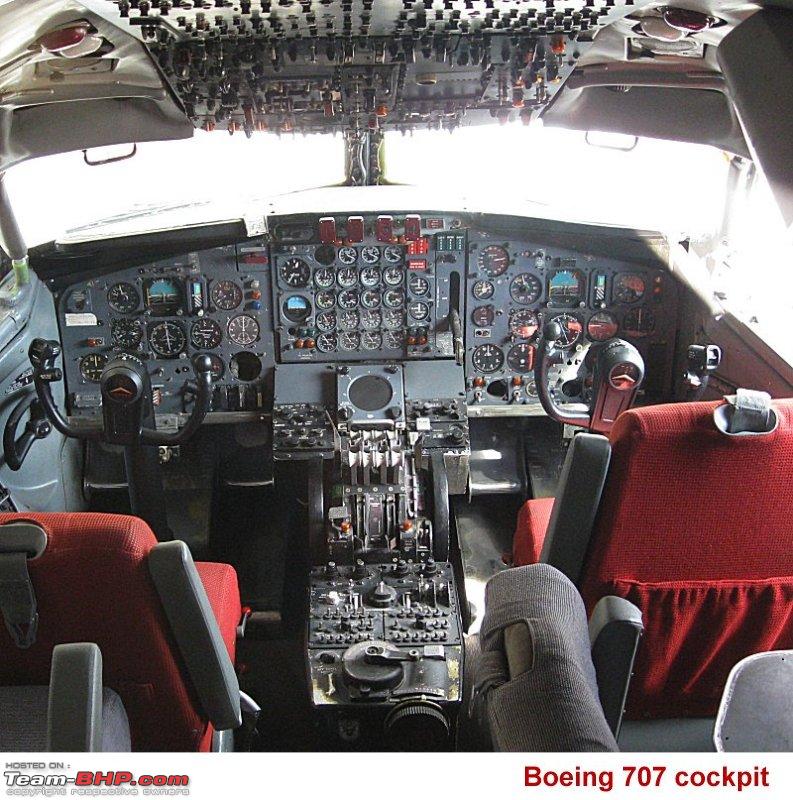




l Picture of plane in roll 
Picture of plane Yaw 
Picture of Plane Pitch 
Sound Barrier Sound is made up of molecules of air that move. They push together and gather together to form sound waves . Sound waves travel at the speed of about 750 mph at sea level. When a plane travels the speed of sound the air waves gather together and compress the air in front of the plane to keep it from moving forward. This compression causes a shock wave to form in front of the plane. In order to travel faster than the speed of sound the plane needs to be able to break through the shock wave. When the airplane moves through the waves, it is makes the sound waves spread out and this creates a loud noise or sonic boom . The sonic boom is caused by a sudden change in the air pressure. When the plane travels faster than sound it is traveling at supersonic speed. A plane traveling at the speed of sound is traveling at Mach 1 or about 760 MPH. Mach 2 is twice the speed of sound. 
Instruments
Four instruments in the basic "T" - Airspeed Indicator,
- Artificial Horizon,
- Altimeter and
- Gyro-Compass;
and additionally - the Turn-and-Bank indicator and
- Vertical speed Indicator.
The 1958-1979 Boeing 707 was the world's first commercially successful jet airliner. Air-India had eleven of them. Six with the Rolls-Royce Conway engines and five with Pratt & Whitney JT3D turbofans.

Overhead panel contains ignition and engine start switches, fire extinguisher switches, HF radios, alternate flap control, emergency exit lights, rain repellent, and exterior lights, compass and vertical gyro transfer functions, Mach Trim test, Fuel filter heaters, Winshield wipers, engine de-icing, hydraulic pumps, Heating switches for pitots and alpha vanes and Airconditioning & Gasper fan switches for Gyro motor and caging for gyrocompass and vertical gyro for bank angle and pitch attitude.
The 1974-2007 Airbus A300 and 1983-2007 A310, had
CRT monitors for altitude and navigation info display.
However they still used traditional mechanical gauges with needles and painted graduations,
for airspeed, altitude and vertical speed.
With the 1988-onwards Airbus A320, and following that the 1993-onwards Airbus 340, 1994-onwards 330 and 2007-onwards 380 they all have full "glass cockpits". 


Full glass cockpit of Airbus A330.
Note sidesticks and absence of control yokes.
All mechanical gauges and warning lights are replaced by interchangeable
general purpose CRT/LCD computer screens that display whatever the EFIS (Electronic Flight Instrument System computer) wants to display via a graphics card.
Autothrottle
Autothrottle on the Airbus is a feedback control system that can be in fixed SPEED mode or fixed THRUST mode.
In SPEED mode, the computer tries to maintain the speed to the pilot-ordered or autopilot-ordered speed, but still within the safety envelope of the aircraft.
In THRUST mode, Autothrottle maintains a fixed power setting
(what we car people call BHP, for a jet engine it's static thrust measured in kiloNewtons or pounds).
The throttles have six detent positions specified according to flight phase: - TOGA (Take-Off/Go Around) power,
- FLX/MCT (Max. Continuous Thrust) power,
- CLB (Climb) power,
- IDLE power,[for flaring when landing]
- REV IDLE (reverse idle) power,
- MAX REV (max. reverse thrust) power
While the throttle is in the CLB detent and Auto thrust is active, the Airbus's FADEC (Full Authority Digital Engine Ctrl) can control the thrust from FLX/MCT to IDLE. The throttles are linked to the FADEC by electronic signals, not by cables unlike in Boeings.
This reduces weight (similar to fly-by-wire controls). Airbus also has brake by wire.
You order the CLB airspeed, and the autothrottle adjusts to maintain it.
Pilot workload greatly decreases, while fuel efficiency and performance improve because of the computerized precision power management.
However to work, Autothrottle needs precise speed measurement.
If the pressure pitots are choked and send questionable speed info, everything can quickly go awry.


|






































No comments:
Post a Comment